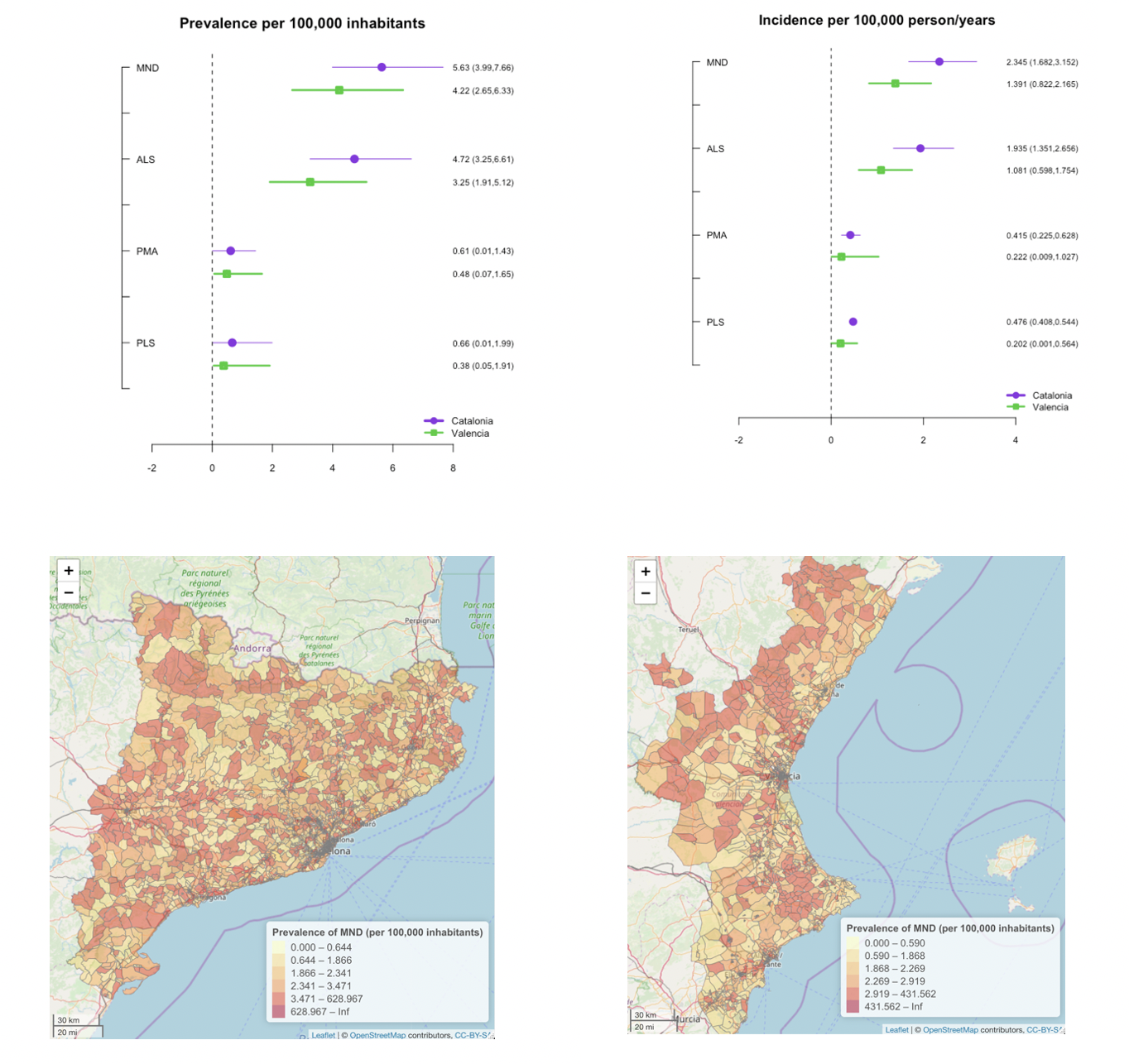
The aim of this study was to estimate the prevalence and incidence of MND, and to determine its different diagnostic categories: amyotrophic lateral sclerosis (ALS), primary lateral sclerosis (PLS), and progressive muscular atrophy (PMA), in the regions of Catalonia and Valencia, Spain, throughout the 2011-2019 period.
This study has offered several contributions, including, in the first place, the provision of estimates of the prevalence and incidence of not only ALS, but also of other diagnostic categories defining MND (PLS and PMA), as well as of MND itself. Secondly, in this article we proposed an original method to estimate prevalence and incidence that allows for controlling the selection bias resulting from not using random population samples. Thirdly, in order to fulfill our goal, we had to access databases from various and different sources, both individual and contextual. It is in this context that the so-called Real World Data became relevant. We used this approach to combine the databases at an individual level with another one at contextual level containing data of the population and socioeconomic level of the area of residence of the study subjects. In addition, we controlled the existence of unobserved confounders, as well as the inherent spatial and temporal dependence of our data.
In line with the results published in the literature, ALS was the most frequent type of MND in our study, accounting for 85.5-96.7% of patients with MND. Our estimates of both the prevalence and incidence of MND and ALS fell within the ranges described in the literature (a prevalence of 4.1-8.4 per 100,000 person-years and an incidence of 0.6‑3.8 per 100,000 person-years).
When estimating the prevalence of MND and its variants per region, we found that the point estimate of the prevalence of MND was higher for Catalonia than Valencia (5.627 vs. 4.216 per 100,000 people, respectively). The same was true when we stratified the analysis by MND variants. The prevalence of ALS, PMA, and PLS observed in Catalonia was higher than in Valencia in all cases (ALS 4.72 vs. 3.25, PMA 0.61 vs. 0.48, and PLA 0.66 vs. 0.38, respectively).
This pattern was also observed when we estimated the incidence of MND and its variants per region, as the incidence was also higher in Catalonia than in Valencia in all cases: MND (2.346 vs. 1.390 per 100,000 person-years, respectively), ALS (4.721 vs. 3.249 per 100,000 person-years, respectively), PMA (0.415 vs. 0.222 per 100,000 person-years, respectively), and PLA (0.476 vs. 0.202 per 100,000 person-years, respectively).
Because the age and sex structure were similar in both regions, and the socioeconomic deprivation index (possible risk factor) was controlled in our model, we believe that these differences (in the point estimators) were not caused by the presence of additional risk factors. Given that both Catalonia and Valencia are two Mediterranean regions with similar characteristics, the differences observed may have been due to the different population covered by the reference hospitals of both regions. In addition, the Valencian population is more geographically dispersed (39.6% of its inhabitants live in the metropolitan area of Valencia versus 71.5% of the inhabitants of Catalonia who live in the metropolitan area of Barcelona), which limits access to the Functional Motor Neuron Unit of the La Fé Hospital of Valencia.
Finally, in our article we provided interactive maps representing the prevalence and estimated incidence by census section of both Catalonia and Valencia. It should be noted that census sections with a very small population at risk should be interpreted with caution.